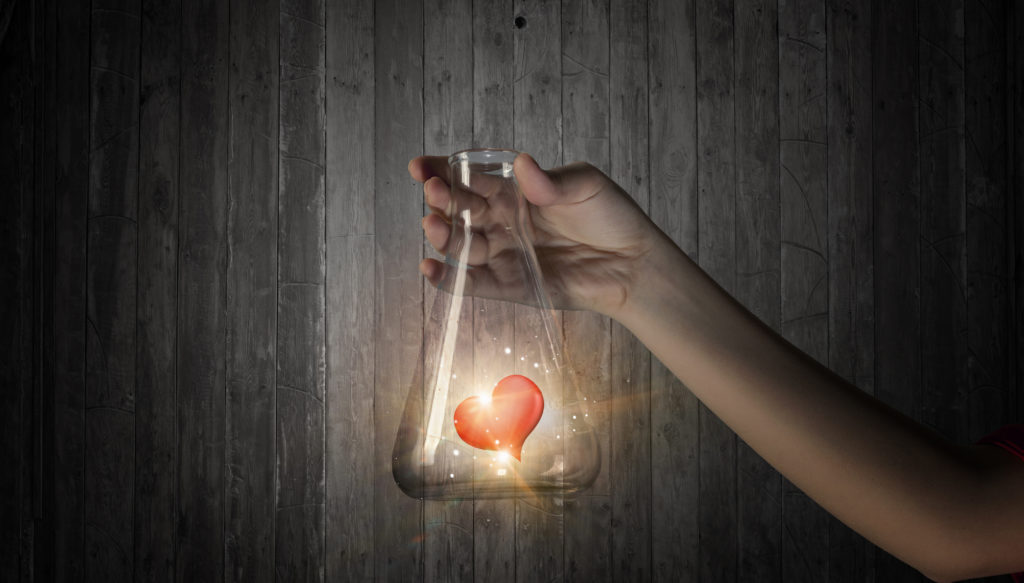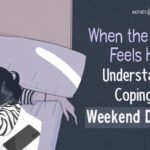Table of Contents
The chemistry of love refers to the intricate interplay of neurotransmitters and hormones that govern our romantic experiences, from initial attraction to long-term attachment. Understanding this neurochemical landscape 1 Seshadri K. G. (2016). The neuroendocrinology of love. Indian journal of endocrinology and metabolism, 20(4), 558–563. https://doi.org/10.4103/2230-8210.183479 offers valuable insights into how relationships shape mental health, highlighting the profound impact of love on emotional well-being and psychological resilience.
What Is Chemistry Of Love?
The phrase “chemistry of love” is often used metaphorically to describe the complex mix of emotions, behaviors, and physiological responses 2 Seshadri K. G. (2016). The neuroendocrinology of love. Indian journal of endocrinology and metabolism, 20(4), 558–563. https://doi.org/10.4103/2230-8210.183479 that occur when individuals experience romantic or passionate feelings for one another. In a more literal sense, the term can be associated with the biological and chemical processes that underlie these emotional experiences.
Characteristics Associated With The Chemistry Of Love And Attraction
The common characteristics 3 Gupta, S. (2002). The chemistry of love. Time, 159(7), 79. Available from: https://pubmed.ncbi.nlm.nih.gov/11881441/ associated with the chemistry of love include:
- Intense attraction and compatibility foster emotional well-being.
- Chemistry promotes positive communication and bonding, enhancing mental health in different stages of love.
- Mutual understanding and shared values contribute to psychological resilience.
- Physical and emotional connections in various stages of love in a relationship can reduce stress and promote overall happiness.
- Chemicals for love in the brain foster feelings of security and belonging, supporting mental stability.
- Enhanced emotional intimacy can lead to increased self-awareness and personal growth.
- Chemistry-driven relationships often exhibit higher levels of satisfaction and fulfillment, benefiting mental health functioning.
Read More About Love Here
What Are The Stages Of Love In A Relationship?
The common 4 Shih, H. C., Kuo, M. E., Wu, C. W., Chao, Y. P., Huang, H. W., & Huang, C. M. (2022). The Neurobiological Basis of Love: A Meta-Analysis of Human Functional Neuroimaging Studies of Maternal and Passionate Love. Brain sciences, 12(7), 830. https://doi.org/10.3390/brainsci12070830 stages of love in a relationship include:
- Attraction: Initial stage marked by physical and emotional interest.
- Infatuation: Heightened excitement and obsession with the other person.
- Attachment: Development of deep emotional connection and commitment.
- Intimacy: Sharing vulnerabilities and building trust.
- Stability: Established bond with mutual respect and understanding.
- Long-term Love: Sustained affection and partnership, characterized by companionship and support.
Read More About Attachment Here
What Triggers Love In The Brain?
Research 5 Earp, B. D., Wudarczyk, O. A., Foddy, B., & Savulescu, J. (2017). Addicted to love: What is love addiction and when should it be treated?. Philosophy, psychiatry, & psychology : PPP, 24(1), 77–92. https://doi.org/10.1353/ppp.2017.0011 on how love works states that neurotransmitters collectively orchestrate the intricate chemistry of love, shaping emotional responses and relationship dynamics. Several feel-good chemicals for love in the brain as well as love hormones include:
- Norepinephrine: Governs adrenaline production, inducing the exhilarating rush associated with love, leading to euphoria, increased energy, and heightened focus on the loved one.
- Dopamine: Known as the “happy hormone,” it amplifies pleasure and sociability, triggering feelings of bliss and enjoyment, crucial for the initial stages of attraction and infatuation.
- Phenylethylamine: Sparks the butterflies in the stomach and enhances dopamine and endorphin production, intensifying feelings of euphoria and energy, particularly during the early stages of attraction.
- Oxytocin: Referred to as the “love hormone,” it facilitates bonding, trust, and intimacy, promoting emotional connection and closeness during cuddling and sexual activity.
- Vasopressin: Promotes companionship and stability, influencing desires for long-term commitment and nurturing behaviors in romantic partnerships, especially in men.
Read More About Dopamine Here
Impact Of Chemistry Of Love And Attraction On Mental Health
The chemistry of love profoundly influences mental health 6 Jobling M. A. (2011). Love chemistry. Investigative genetics, 2(1), 9. https://doi.org/10.1186/2041-2223-2-9 by triggering the release of neurotransmitters and hormones associated with pleasure, bonding, and emotional connection. This neurochemical cascade can enhance mood, reduce stress, and promote overall well-being during the initial stages of attraction and infatuation. However, the intensity of these feelings may also lead to emotional vulnerability and dependency, impacting mental health functioning.
Furthermore, the long-term effects of love chemistry, characterized by attachment and intimacy, contribute to feelings of security, belonging, and emotional stability. Strong relationships built on mutual respect, trust, and communication can provide essential support networks, buffering against mental health challenges such as depression and anxiety.
Read More About Depression Here
Mental Illness And Chemistry Of Love In The Brain
The chemistry of love in the brain interacts intricately with mental illness 7 Esch, T., & Stefano, G. B. (2011). The neurobiological link between compassion and love. Medical science monitor : international medical journal of experimental and clinical research, 17(3), RA65–RA75. https://doi.org/10.12659/msm.881441 . Neurotransmitter imbalances can both influence and be influenced by psychiatric conditions, leading to emotional distress in romantic relationships.
For instance, individuals with mood disorders like depression or bipolar disorder may experience altered levels of dopamine and serotonin, affecting their ability to experience pleasure and form healthy attachments. Similarly, disruptions in oxytocin and vasopressin pathways 8 Leonti, M., & Casu, L. (2018). Ethnopharmacology of Love. Frontiers in pharmacology, 9, 567. https://doi.org/10.3389/fphar.2018.00567 may contribute to difficulties in forming and maintaining relationships for those with conditions such as autism spectrum disorders or borderline personality disorder.
Read More About Bipolar Disorder Here
Takeaway
The chemistry of love encompasses a complex interplay of neurotransmitters and hormones, each contributing to the intensity and dynamics of romantic relationships. From the initial rush of attraction to the deep bonds of attachment, these biochemical signals shape our emotional experiences and influence our behaviors in profound ways. Understanding this neurochemical orchestration in love and brain offers insights into the mysteries of love, highlighting its power to elicit joy, foster connection, and enrich our lives.
At A Glance
- The chemistry of love involves neurotransmitters and hormones shaping romantic experiences and mental health.
- Characteristics associated with love chemistry include attraction, communication, shared values, and intimacy.
- Love progresses through stages like attraction, infatuation, attachment, and long-term commitment.
- Love and brain are related, as neurotransmitters like dopamine, oxytocin, and vasopressin play crucial roles in fostering emotional connection and stability.
- Disruptions in these pathways can lead to emotional distress, particularly for those with mental illnesses.
- Understanding love chemistry offers insights into the complexities of relationships and their impact on well-being.
Frequently Asked Questions (FAQs)
1. Why is love compared to chemistry?
Love is compared to chemistry because both involve complex interactions and connections between individuals.
2. Is chemistry in love real?
Yes, chemistry in love is real, as it refers to the intense attraction and compatibility felt between two people.
3. How long does a love chemistry last?
The duration of love chemistry can vary greatly depending on individuals and circumstances, ranging from weeks to years.
4. Why do people fall in love with chemistry?
People often fall in love with chemistry because it creates a strong emotional and physical connection that feels natural and fulfilling.
5. What are the three stages of love?
The three stages of love are attraction, attachment, and long-term commitment.















